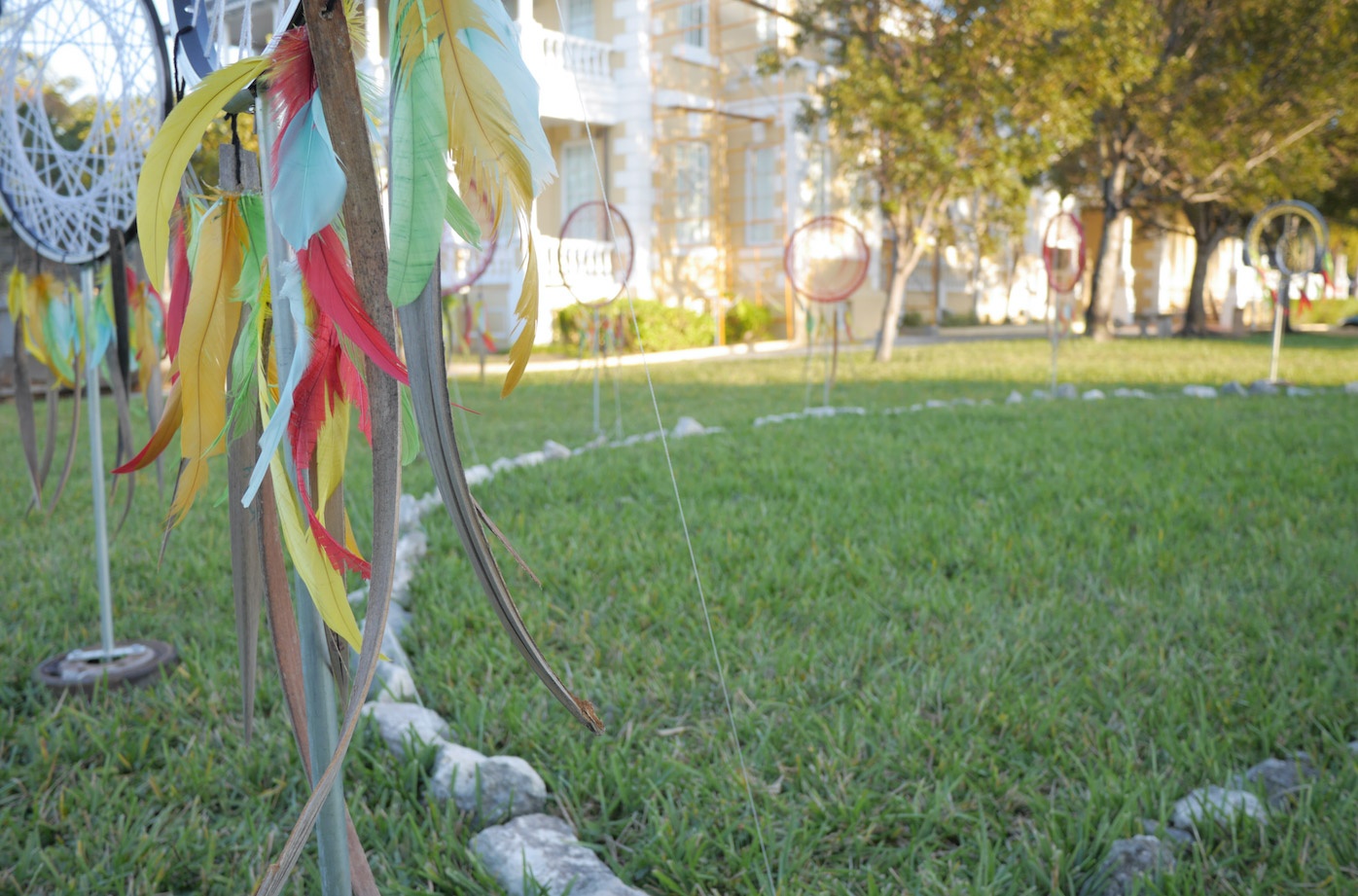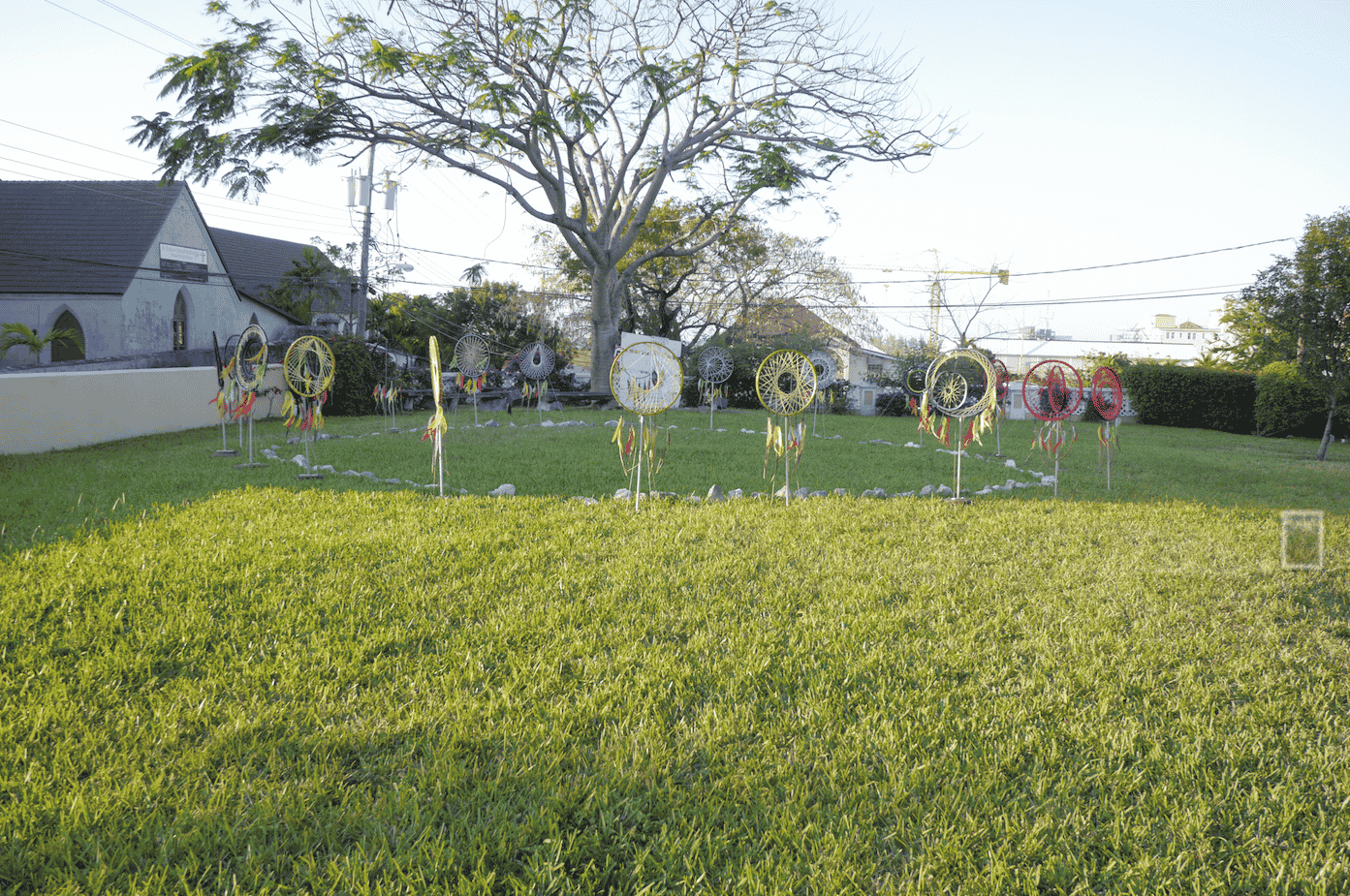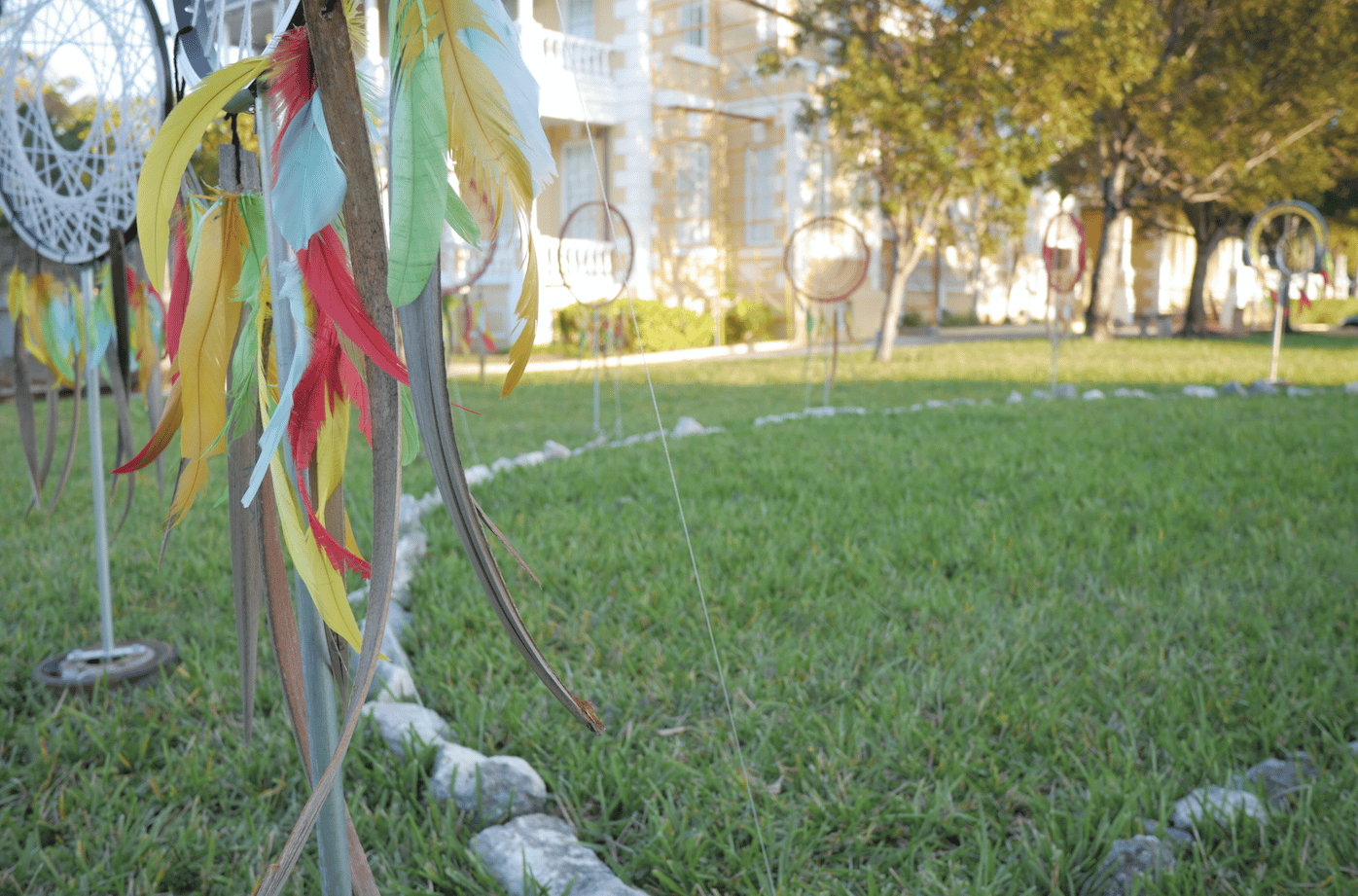
Since it was established 12 years ago, Transforming Spaces has been focused on offering Bahamian artists a platform to showcase their works and voice their opinions. An interactive event, its aim is also to encourage public support for the Bahamian creative community.

This year, the tour’s format changed to focus on the Downtown Nassau community, with the theme “SWELL: Community + Collaboration”. With this in mind, it seemed a suitable occasion for artist and activist Candis Marshall to call attention to the purpose of her non-profit Mega Mergers and a segment of the population that many feel is being overlooked. Mega Mergers Marshall started Mega Mergers in 2015 as a summer camp that focused on at-risk teenagers. Her intention was to teach them the fundamentals of entrepreneurship, accountability and self-sufficiency.
They worked with recycled materials, usually old vehicle and bicycle tires, transforming them into attractive and interesting accessories and furniture. “With Mega Mergers, that was my aim more than anything else. I wanted to teach them to make money, create products and live in this world. I hoped that I could help them to think through difficult situations. I hoped I could help them to respond, rather than react, when things happen that are not as they expected. I wanted to enable them to accept critique without falling apart and to understand their place in society and take responsibility for their position,” she explained. But she found, as she practiced effective communication and critical thinking skills with them, that many of them had little hope for their futures. “They would say things like, ‘We have foreigners coming in and they’re taking our jobs and the government is not listening to us’. They kept complaining about all of these things… That they might have the power to make a change in their community was an absolute shock. They were comfortable with being fearful of the future. They were comfortable with being hopeless and despondent,” she said.
Wanting to respond and call attention to what she viewed as a growing disconnect among young Bahamians, Marshall developed the concept of a dream catcher garden. She hoped to create an installation that would be thoughtful, compassionate and moving – and Transforming Spaces 2016 offered an opportune moment. A Garden of Dreams With the support of the National Art Gallery of The Bahamas (NAGB), Marshall created a series of 20 dream catchers to be installed on the NAGB grounds. The catchers are made from unorthodox materials (bicycle rims, yarn, feathers and coconut husk) and divided into four sections by color (red, black, white and yellow) to represent “the dominant races around the world”. Their designs, though, are more personal and closer to home.

Marshall created a new weave for each catcher, leaning on her emotions and spirituality to guide her. “When I was doing the white section and the black section, that was more of a spiritual, prayerful thing for me. I reflected on my life growing up and the things that I’d experienced that propelled me to think the way I think and to believe what I believe,” she explained. “So the emotions associated with my childhood came up. My childhood was very rough. And at each point of preparing the dream catcher, I said a prayer to put some positive energy there. And as I did it, different ideas came out as far is the weaving is concerned.” She installed the catchers on the NAGB grounds in a ring – a medicine circle. “The medicine circle is divided into four sections. Each section is positioned in line with the compass points (north, east, south and west),” explained Marshall. “It’s believed that there are certain energies that emanate from those directions. So as we meditate and pray in those directions, those energies are deposited and we connect with them.”
Hoping to encourage community involvement by making the piece interactive, Marshall installed a blank board for visitors to reflect on their hopes and dreams and write them down. By the end of the Transforming Spaces weekend, the board had collected a medley of phrases from Transforming Spaces 2016 guests as well as NAGB visitors. “We had one lady who was tearful when we were done talking. She went into a meditative moment,” said Marshall, who spoke with visitors about her work and the installation during the weekend tour.
“The most dominant response was, ‘I wish more people could have heard this message, or thought this way, or could be a part of this’.” Candis Marshall’s “A Garden of Dreams” will be on display at the NAGB grounds until late spring. It is free to visit and all members of the public are encouraged to contribute their hopes to the dream board.